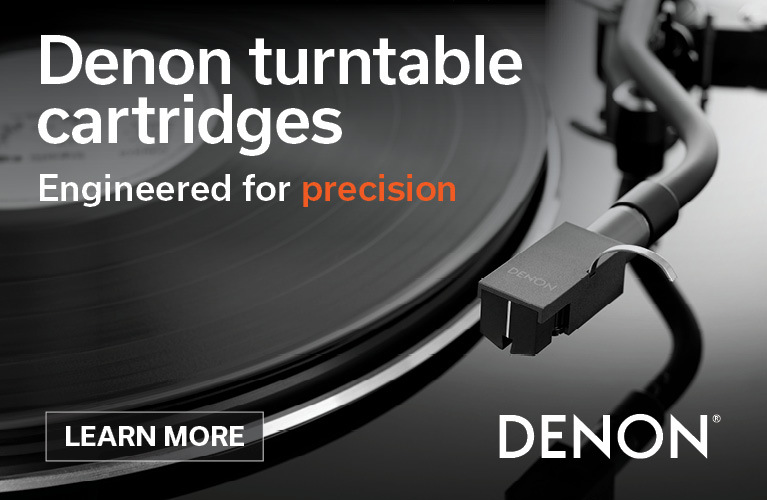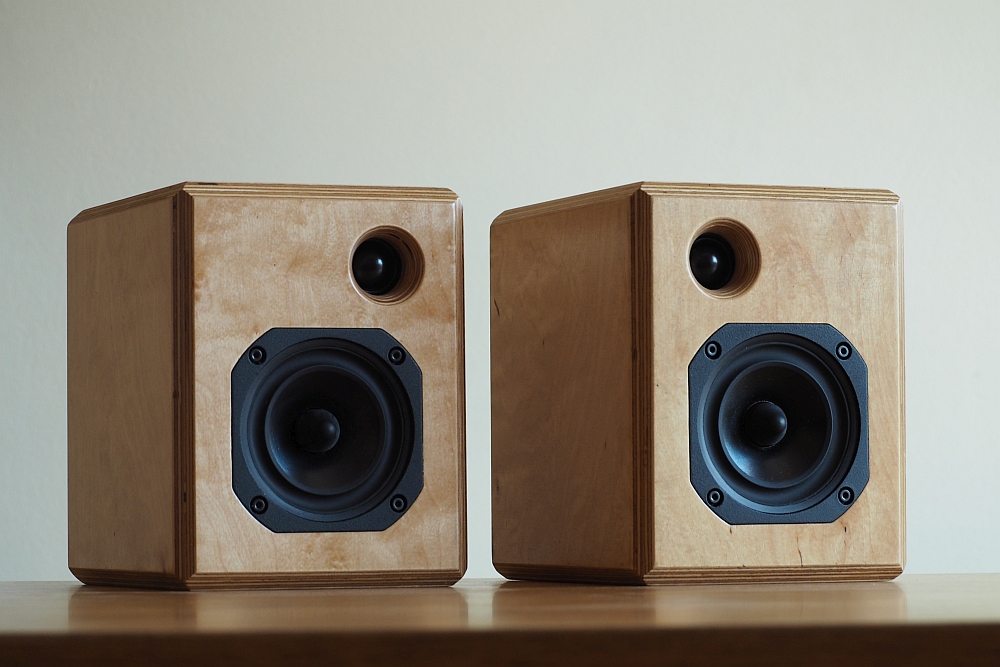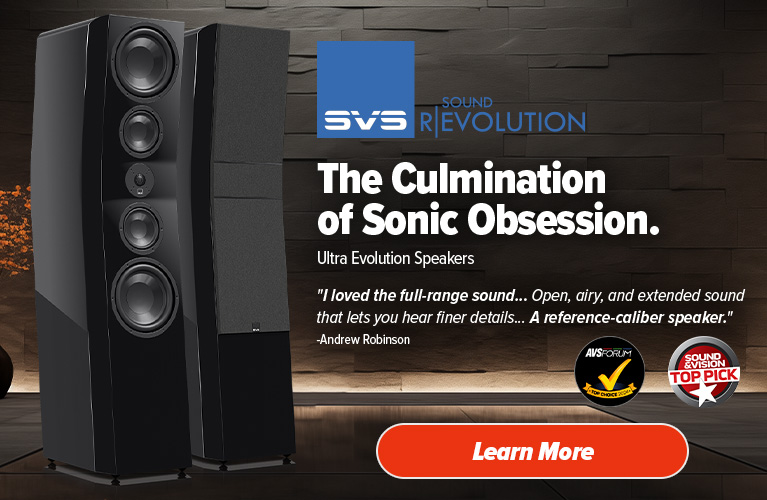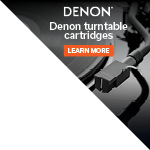In my view, if you call yourself a normal human being you have to be crazy about something. Jean-Marie Liere is crazy about speakers, which also gives an additional meaning to the name of his company “Microphase Audio Design”. This diagnosis must have been accurate since Jean-Marie’s early days when he created the minuscule audio monitor speakers (“Microphase SAT” model) that attracted quite a following due to their great sound, their beauty and the quality of their build. Many years (and many speakers) later, the most recent product to come out of Jean-Marie’s design workshop is the “SAT MkII Signature” speaker that continues on this philosophy of small size and high quality.
Features
These speakers are for the real-estate-challenged audiophiles with disposable income. To begin with, each speaker is no bigger than an average toaster, yet it packs three powerful drivers, one of which is a rear-firing woofer of surprising vigour, and somehow also houses all the internals that such drivers require. The main mid-bass driver is a paper 110mm Audax cone with bullet phase plug while the 25mm silk dome tweeter and unusual 160mm aluminium dome rear-facing driver comes from an undisclosed source. The high quality crossover features parts from Mundorf.
The speakers are specified with a frequency response of 70 Hz to 40 kHz +/- 5dB and have a sensitivity of 89dB. The impedance is stated as 4 ohms nominal, starting at around 4 ohms at 20 Hz, peaking at 7 ohms around 55 Hz and then staying close to 4 ohms until 700Hz when it briefly dips down to 2 ohms. Above that frequency, the impedance hovers around 4 ohms until 6kHz, when it starts trending down and finally goes and stays below 2 ohms above 10.5 kHz. The phase angle (which combines with the 4 ohms nominal impedance rating) is +/- 15 degrees from 300 Hz to 40 KHz.
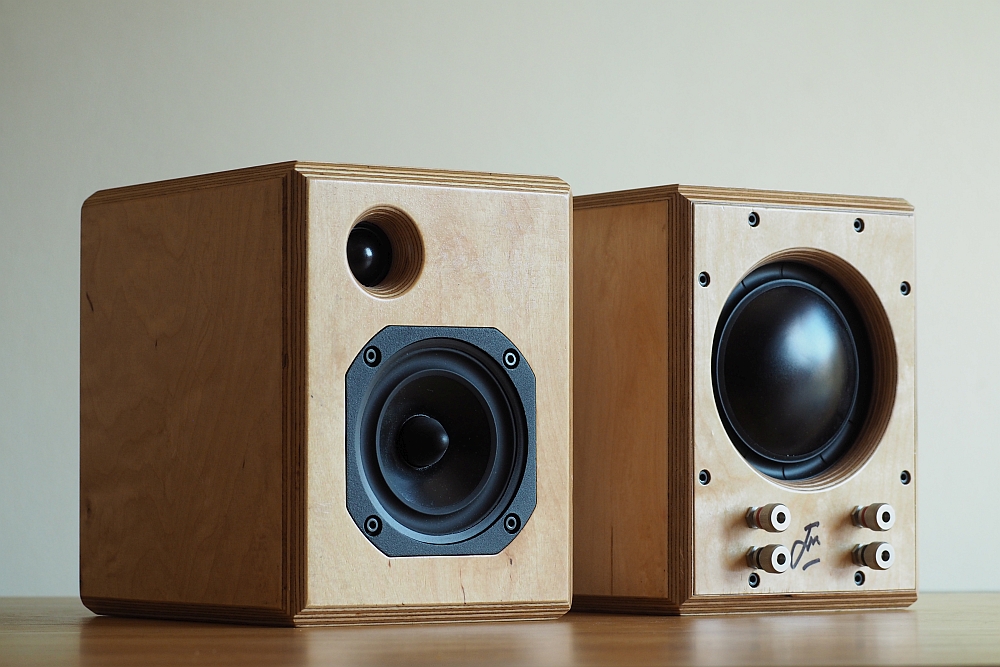
If any speaker can be called quintessentially European, this is it: great sound, high quality build and small size that fits unobtrusively into European-style apartments that are becoming the norm.
SAT MkII Signature’s (Signature for short) cabinet is made of sturdy marine-grade plywood, exquisitely finished in clear lacquer that emphasizes the texture of the wood. Acoustically, it’s “dead as a dodo” and it does not perceptibly resonate on any frequency, which is exactly as it should be.
Before I talk about these speakers’ sound, please let me describe my listening room, since I expect that quite a few people who’d be interested in Signatures might be in a similar situation in regards to their rooms’ sizes and features. The room is 4m wide and 3.7m deep, so that the central listening position is 2m away from the side walls. The distance between this central spot and each speaker varies depending on a particular speaker model, and it’s usually around 2.5m for serious listening. Furthermore, on the right hand side of the room there is a stairwell and on the left there is a short wide passage towards the back. These two irregular cavities reduce low-frequency standing waves to a great degree. Along the 4m back wall behind the speakers is a bookcase-cum-entertainment unit with a multitude of textures and surfaces at different depths and angles, which disperses the sound reflections and reduces the room reverberance. Combined with the two side cavities that dampen the bass, the net effect is fairly decent acoustics, so at high volumes it’s more likely that you’ll have to quieten down because of an irate neighbour than because of the harshness of the sound.
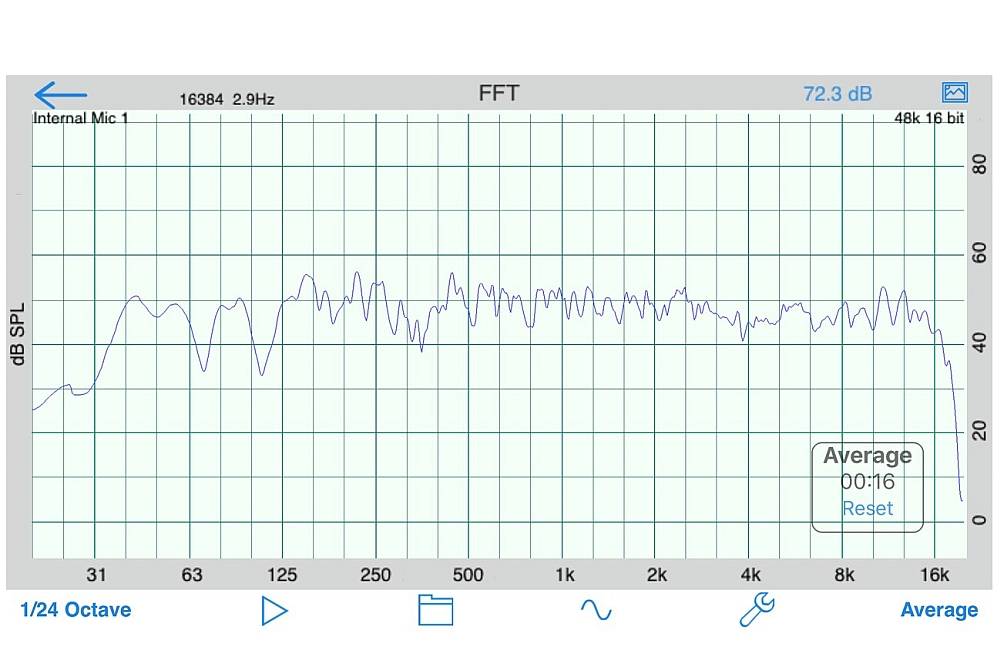
Listening Impressions
The main impression Microphase SAT MkII Signature speakers left on me was their remarkably accurate mid-range sound reproduction, to a degree that they can expose any deficiencies in your hi-fi chain, and particularly in your power amplifier. When you audition these speakers, and with all other components being top-notch, you will in all probability really audition your power amplifier instead. Do not let their small size fool you: Signatures need power, crave power, breathe power, and plenty of current to be exact. I tried four amplifiers with them: a high-quality 75 watts per channel (4 ohms) from a company with a legendary reputation, a “fifty-dollar-fifty-watts” ($LLW) device of a plasticky kind, a high-end 50 watts per channel valve amplifier and, lastly, a 350 watts per channel (4 ohms) top-quality high-current amplifier housed in a classic Phase Linear 400 Series Two enclosure which has been completely rebuilt, modified and modernised.
I also heard them briefly with Bryston 3B vintage amp and the verdict is in: the more power-the better, the more current-the better. Definitely. $LLW need not apply. Same goes for anything that has transformers on the output. In my opinion, Signatures demand a powerful amplifier of at least 100 watts into 4 ohms and able to deliver lots of current, just as a top-class ballerina needs a strong, reliable partner to propel her high into the air and then to catch her confidently on the way back. Feed these speakers inadequate power and you will hear all kinds of artefacts that will make you cringe, but give them the power (and the current) they need and they will make you very happy indeed.
Signature’s insistence on high power and high current probably stems from the fact that, although their nominal impedance is 4 ohms, above 6 kHz it starts falling and goes below 2 ohms for the frequencies above 10.5 kHz. This means that your amplifier must be able to deliver good power to a low impedance load at high audio frequencies (i.e. capacitive load), which is what probably created such challenges for most amplifiers I tried.
With the right amplifier (350 watts per channel into 4 ohms in my case), Signatures performed very nicely indeed in my room. They had a punchy bass (above 70Hz or so, due to the geometrical limitations imposed on the woofer, but you can get Microphase subwoofers/speaker stands or you can use some other subwoofer if you want to go lower, which I occasionally did), clear accurate mids and crystalline trebles, while the soundstage they produced was precise and quite tolerant of the speaker position. I initially placed the speakers about 2.7m away from the central listening spot and with speaker-to-speaker distance of about 2.5m. The speakers themselves were on 75cm tall stands.
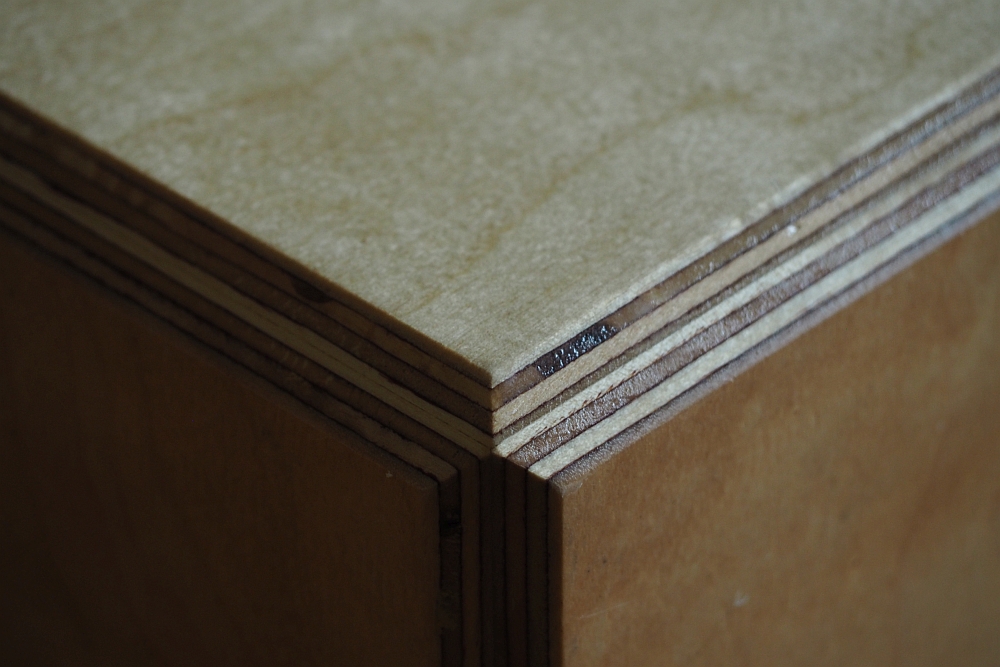
With speakers in that position, the instruments had the sharpest focus (for example, when playing “Fantasia Suite”, from Al Di Meola, John McLaughlin and Paco De Lucia’s album Friday Night in San Francisco, Signatures properly resolved three guitars on the stage, which is a no mean feat) and the soundstage expanded sideways as it should have, although the majority of it decided to remain between the speakers. That prompted me to increase the speaker-to-speaker distance to about 3m. When that was done, the soundstage did not split into two distinct sound sources, which was a pleasant if not a complete surprise. Yes, the instruments did lose some focus, but not much, and yes, the soundstage lost expansion and confined itself strictly to the area between the speakers, but those losses were quite acceptable in comparison with the added benefit of a physically wider soundstage that proved to be advantageous to most tracks I listened to. There was one exception, however, that sounded equally well with speakers in both positions: the Deep Forest CD. Whichever track was played, Signatures produced a fully three-dimensional soundstage: wildlife sounds and human voices in “Sweet Lullaby” were coming from left and right, back and forth, as well as up and down, well beyond the speakers in every direction! I’m not sure what caused this effect to be so pronounced in this particular recording and with these particular speakers, but it was nevertheless an almost magical experience.
Lastly, I started pushing the speakers further away from the listening position and closer to the rear wall/bookcase, just to see at what point this sacrilegious move would start impacting the sound and the soundstage. To their credit, Signatures performed just fine up until I put them almost right next to the bookcase. That’s when the bass became muddled and boomy because the rear-firing woofer ran out of room at the back. All in all, Signatures proved to be very accommodating in regards to their placement, which is important for the small spaces they’re intended to perform in. Yes, for really serious listening you will want to put them in their ideal position away from the back wall, but if you’re pressed for space you should be able to leave them out of the way in a convenient spot most of the time and they should still sound fine.
As mentioned before, due to their accuracy Signatures tend to reveal the deficiencies in your Hi-Fi chain, which includes the “cutting goofs” of the vinyl. For example, at the beginning of track 3 (“Grande, Grande, Grande”), on the album Julio Iglesias – Live in Concert, there is a very pronounced “ssss” that shoots way above and beyond the left speaker. Vinyl has this; the CD version does not. Signatures are also accurate enough to properly play Boney M’s vinyl version of “Night Flight to Venus”, the first track on the album of the same name, i.e. they faithfully reproduce the effect of horizontally rotating drums that are supposed to represent the ignition of the rocket engine, although in reality the whole thing always gives me an impression of a steam locomotive starting up.
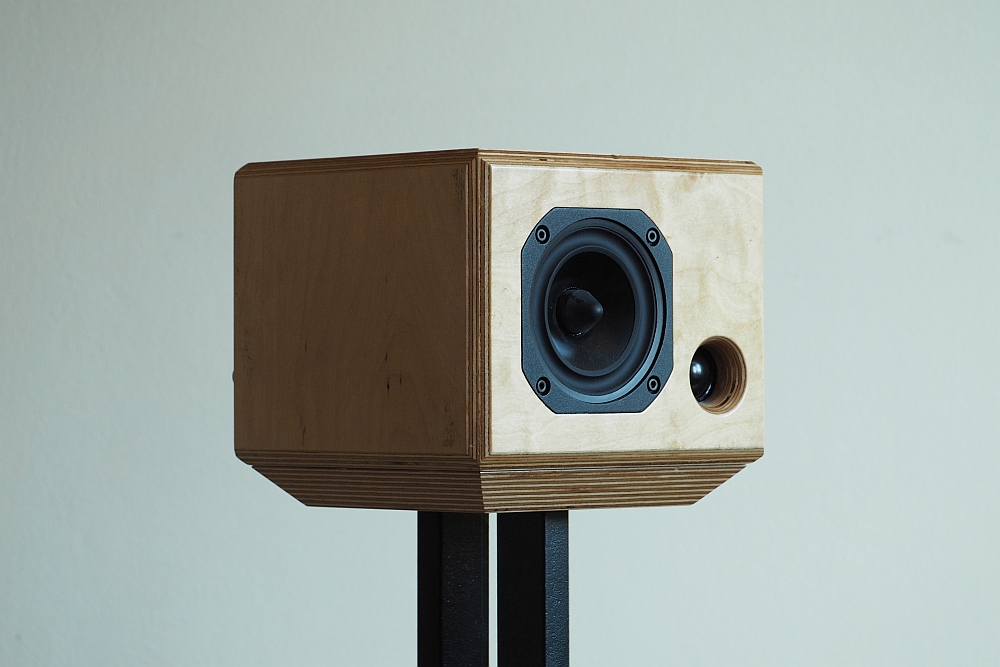
Signatures to a great degree sound neutral, especially in the mids. Their personal timbre has a pleasant, slightly oboe-sounding tinge, but we’re indeed talking about traces here and when set up properly these speakers brought out the best in the recordings I tried them with. Here are some examples:
Female vocal: Ana Moura, album Coliseu, live recording of arguably the best current Portuguese “fadista” in concert at the top of her powers. Signatures brought her dark, caressingly raspy voice out with utmost clarity and drama, each vowel charged with emotion, every strum of the accompanying guitars alive up and down the scale, with plenty of detail. Prepare yourself for an acoustical treat on track 2, where this lady clearly shows everyone who’s the boss…
Male vocal: Paul Young, studio album No Parlez, track 3 “Wherever I Lay My Hat”. Great speakers make you literally bathe in this guy’s voice (at least for the first 3 minutes or so, after which the lyrics go off the rails, but those 3 minutes are well worth a listen). Signatures certainly achieved this with aplomb. Tick.
Jazz: Wynton Marsalis & Eric Clapton, live album Play the Blues, track 1 “Ice Cream”. Trumpets, electric guitars, trombones, banjo… jamming, improvising, having fun. Each instrument was well defined and placed in its right spot, had fantastic dynamics and presence, so in the end I just closed my eyes and enjoyed the music. Another tick indeed.
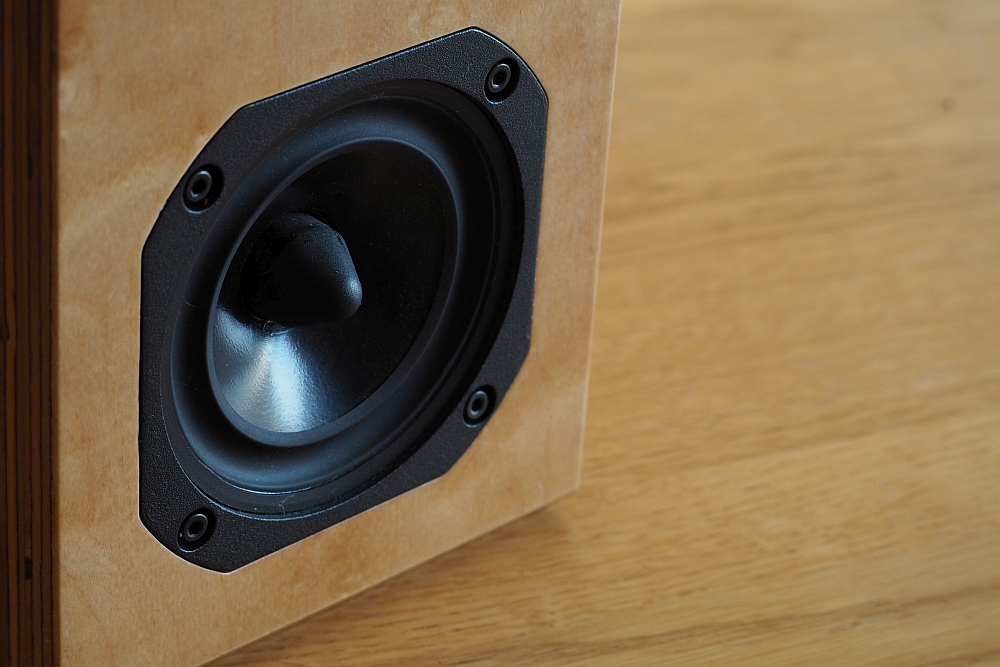
One thing I did notice was Signatures’ love for treble and transients, which occasionally prompted me to bring the high frequency controls down a bit. This is not that surprising given Signatures’ reduction in impedance above 6 kHz and the fact that most amplifiers’ negative feedback (if present) is voltage-based, thus resulting in more power being pumped into Signatures’ tweeters. That said, most of the time Signatures sounded very linear and they just needed a tweak of the treble here and there, depending on the track being played. By the way, I know quite a few people who prefer slightly emphasised high frequencies and I’m sure they’d have left the tone controls alone.
During the time I had Signatures with me I played a wide range of music and watched which musical genre they were going to tend towards. After a while I noticed their slight preference for chamber music and jazz, as opposed to their perhaps a little bit of shyness in regards to the grandiosities of the symphonic orchestra and operatic works. Signatures sounded particularly engaging when playing the recordings with smaller number of instruments (quartets, quintets and the like, bands and ensembles especially if they included guitars, trumpets, cellos or saxophones). On the other hand, violins for some reason occasionally sounded a bit bright in their upper range on some tracks. One track, however, did sound smooth through the Signatures: The Allman Brothers Band, live album The Fillmore Concerts, CD1, track 5: “One Way Out”. There is a long guitar solo/duet that starts 2 minutes into the track and can sound a bit harsh on “bright” speakers, but Signatures delivered it without me ever reaching for the tone controls. Well done!
Signatures also handled choirs commendably: Ligeti’s “Requiem…”, track 3 from the 2001: A Space Odyssey soundtrack came across as a vibrant, dynamic wall of human voices and sounds that were firmly placed within my listening room and with plenty of detail and atmosphere.
Conclusion
I really enjoyed listening to Signatures. I also like their appearance and design that has small spaces in mind. Commercially speaking, I believe their price of $3,500 reflects their quality, but please do not lose other components from your sight. My usual (and quite personal) starting point is that the speakers should take half of the total hi-fi budget. This rule of thumb has some caveats around it (e.g. an assumption is: one source, one preamp, one power amp, two speakers), but for me it usually works as a reasonable start. In the case of Signatures, I recommend that your power amplifier should get some additional attention because of its key role in the chain. I’d also expect that from time to time your bass-intensive tracks might require a subwoofer. Jean-Marie has designed and built subwoofers/speaker stands ($2,800/pair) that sport the same look and handle the bass just as well as the Signatures handle the rest of the spectrum. Alternatively, your existing subwoofer might be able to assist, just as mine did.
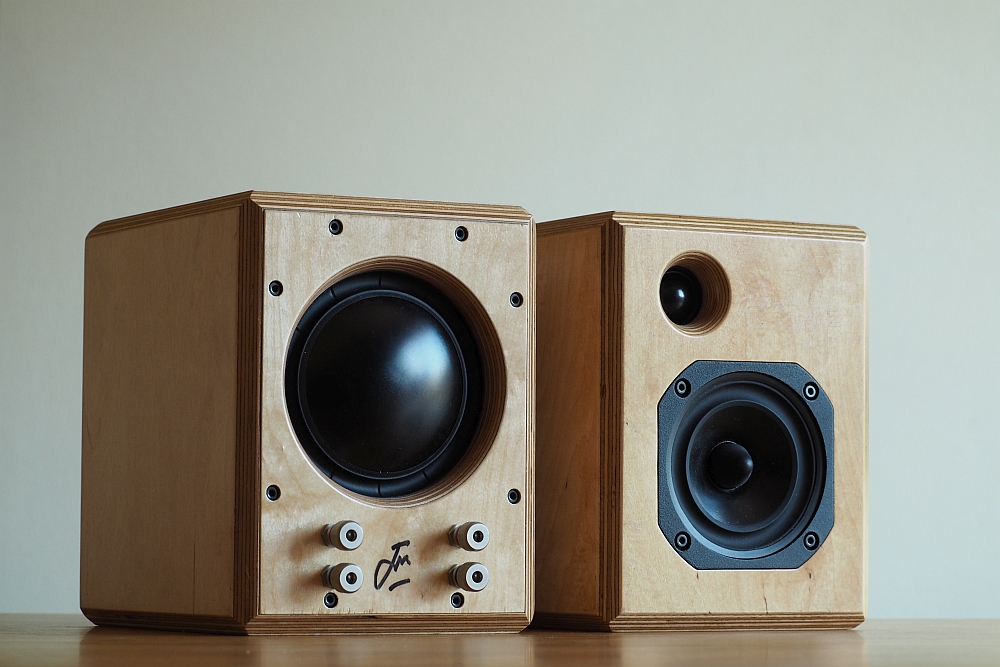
In summary, I think the Microphase Audio Design SAT Mk.II Signatures are high-quality speakers well worthy of your attention, especially if you’re pressed for space, keeping in mind that your Hi-Fi chain has to be of equally high quality to give them justice, and your power amplifier in particular.
…Vedran Simunovic
www.soundstageaustralia.com
Associated Equipment
- Amplifier — Custom made/modified, based on Phase Linear 400 Series Two
- Preamplifier — Rotel RC-1550
- Sources — Digital: Oppo BDP-105AU; Analogue: Linn Sondek LP12 turntable, Hercules power supply, Grace 707 tonearm (modified), Dynavector 10X5 cartridge
- Cables — Interconnects: Custom made; Speaker cables: BelkinPureAV (AV53001-12)
- Subwoofer — Anthony Gallo MPS-150 subwoofer amplifier, with a custom 12 inch driver
Microphase Audio Design SAT Mk.II Signature
Price: AU$3500
Warranty: Three Years
Microphase Audio Design
A division of Archinterface Pty Ltd
GPO BOX 2051
SYDNEY NSW 2001
AUSTRALIA
+61 404 107 042
www.microphaseaudiodesign.com

